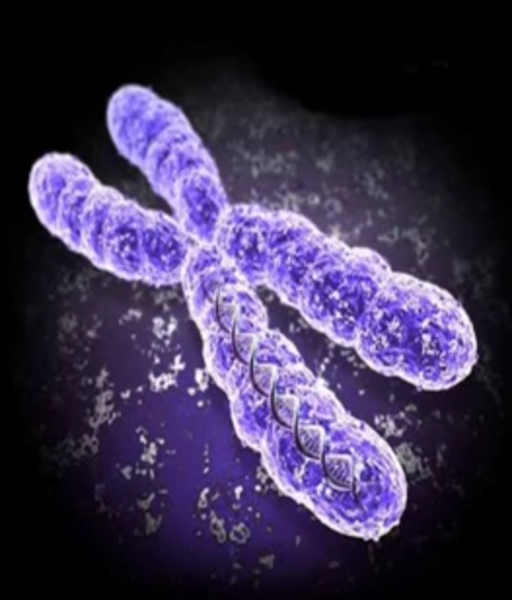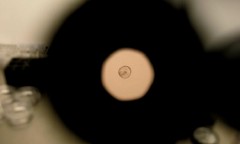By Vishal Goel, | November 22, 2016

An image of a chromosome. (YouTube)
DNA comprises only half of the material inside chromosomes, the threadlike structures found in a living cell's nucleus that carry genetic information, according to a Scotland-based study. Around 47 percent of the chromosome's structure consists of a mysterious "sheath" encasing the genetic material.
Like Us on Facebook
The precise function of the sheath is unknown, but the researchers suggest that the sheath keeps chromosomes isolated from one another during the cell division process. This so-called chromosome periphery could help to prevent errors from occurring during cell division - a hallmark of some forms of cancer and diseases associated with birth defects, Phys reported.
Since their discovery in the year 1882, chromosomes have been the focus of intensive study because their complete structure and organization has remained a mystery. This time, using advanced imaging techniques, researchers have for the first time produced detailed 3-D models of all 46 human chromosomes.
This precise microscopy technique, developed by the scientists at Edinburgh, allows them to study the structure of chromosomes in unprecedented detail. The method, known as 3-D-CLEM, combines light and electron microscopy with computational modeling software to produce high-resolution 3-D images of chromosomes.
According to the study published in the journal Molecular Cell, analyzing the images reveals that chromatin, the material containing DNA and supporting proteins, accounts for between 53 and 70 percent of the total content of chromosomes. The remaining 30 to 47 percent is composed of the chromosome periphery.
"We now have to re-think how chromosomes are built and how they segregate when cells divide, since the genetic material is covered with by thick layer of other material," said Professor Bill Earnshaw of the School of Biological Sciences.
The imaging technique to study chromosomes is truly groundbreaking, says Dr. Daniel Booth of the School of Biological Sciences. After knowing the structure of all 46 human chromosomes for the first time, researchers have been forced to reconsider the idea that they are composed almost exclusively of chromatin, an assumption that has gone largely unchallenged for almost 100 years,
The study, which was funded by The Wellcome Trust, was carried out in collaboration with the Kazusa DNA Research Institute, Japan, National Cancer Institute, US, and the University of Liverpool.
-
Use of Coronavirus Pandemic Drones Raises Privacy Concerns: Drones Spread Fear, Local Officials Say

-
Coronavirus Hampers The Delivery Of Lockheed Martin F-35 Stealth Fighters For 2020

-
Instagram Speeds Up Plans to Add Account Memorialization Feature Due to COVID-19 Deaths

-
NASA: Perseverance Plans to Bring 'Mars Rock' to Earth in 2031

-
600 Dead And 3,000 In The Hospital as Iranians Believed Drinking High-Concentrations of Alcohol Can Cure The Coronavirus

-
600 Dead And 3,000 In The Hospital as Iranians Believed Drinking High-Concentrations of Alcohol Can Cure The Coronavirus

-
COVID-19: Doctors, Nurses Use Virtual Reality to Learn New Skills in Treating Coronavirus Patients











